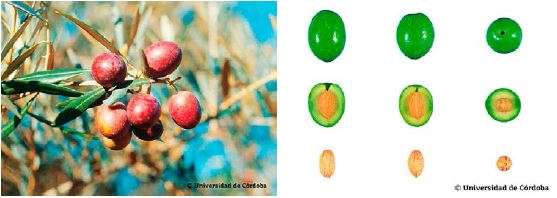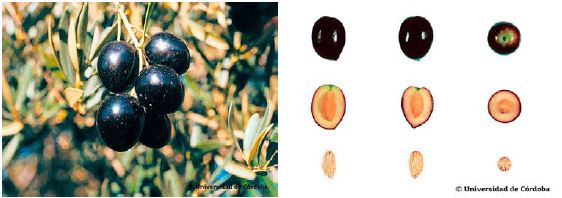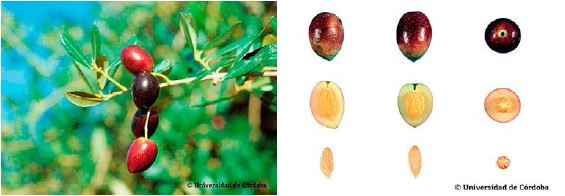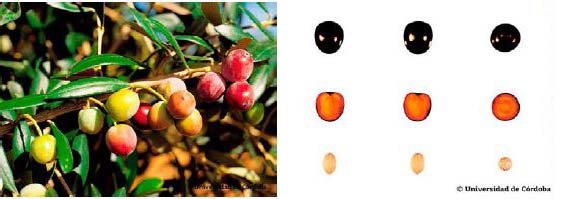News
DOUBTS AND POSSIBLE IMPROVEMENTS IN OLIVE OIL LABELING
In July 2019, the Mercacei Magazine (specialized in the olive sector) published news referring to an academic study, signed by M. Parras Rosa in collaboration with the University of Jaén, which stated the following: "It is evident that consumers are not familiar with the different Olive Oils available in the market, and even less aware of the differences between them." This is undoubtedly an apparent contradiction in the leading country of Olive Oil production.
Considerations to Keep in Mind
1.
The same publication proposed using symbols to identify
different qualities of Olive Oils on labels. Additionally, it highlighted that
70% of consumers are unaware that olive oil is a blend of virgin and refined
oils, stating: "It seems that something is not very clear on olive oil
labels."
The label of a food product is one of the means of controlling
food safety. Currently, regulations regarding food labeling state that:
·
The label must be readable, understandable, indelible, and
easily visible.
·
It must tell the truth and not mislead the consumer, which is
not always the case.
The label on the Olive Oil container is a presentation card for
the consumer. Therefore, it should provide information so that consumers can
choose the type of oil they wish to purchase and consume without being misled.
The legal regulations for the labeling of Olive Oil are extensive. For the sake
of brevity in this article, we will only analyze those points that, in our
opinion, could be improved.
Analysis and Comments on Olive Oil Labeling Regulations
1.
Name and Description of the Product
In the case of Olive Oil, it is mandatory by law to put the name
of the type of oil (legal name) and a text with the product's definition on the
label (a text that almost no one understands its meaning):
·
Label Name: Extra Virgin Olive Oil Definition: Olive oil of
superior category obtained directly from olives and solely by mechanical means.
·
Label Name: Virgin Olive Oil Definition: Olive oil obtained
directly from olives and solely by mechanical means.
·
Label Name: Olive Oil (We remind you that this oil is a blend of
mostly refined oil with a little virgin olive oil) Definition: Oil comprising
exclusively olive oils that have undergone refining and oils obtained directly
from olives.
Various studies show that there is confusion among consumers
regarding the terminologies of Olive Oil:
1st category: Extra Virgin Olive Oil (EVOO) 2nd category: Virgin
Olive Oil (VOO) 3rd category: Olive Oil
Many consumers associate the word "refined" with its
grammatical meaning: "Delicate and not vulgar thing"; "Result of
much and careful elaboration"; "Refined dish"; "Refined
cuisine." It is thought that something refined is a quality, but the real
meaning, when this word is associated with an industrial process, is very different.
Being aware of this reality, we must ask ourselves: Should we
change the name of Olive Oil to end the confusion between EVOO and refined oil?
Our answer is affirmative.
Studies conducted by the University of Jaén show that there is
great confusion when using similar terms with positive connotations. In the
same study, it is stated: "Quite the opposite of what a good food
classification system should do: help consumers differentiate them."
When promoting Olive Oils generically, the least healthy and lower-quality
oil is actually being promoted. In this confusion, where refined Olive Oil is
commercially called Olive Oil, the good reputation of Extra Virgin Olive Oil as
a healthy food is used to attribute benefits to Refined Olive Oil that it does
not possess.
In Greece, a country with the highest per capita consumption of
Olive Oil, refined oil is practically not used, and in Italy, it is frowned
upon. Interestingly, in Spain, its consumption percentage is almost 50% of the
total Olive Oil consumption. Perhaps, a change in nomenclature could put an end
to this confusion.
2.
Best Before Date
It is not truly an expiration date since the oil can still be
consumed after the best before date. Therefore, we could say that Olive Oil
does not have an expiration date as such, but it does have a best before date
until which we are guaranteed that the Olive Oil we have purchased maintains
its quality intact.
This best before period is usually between one and one and a
half years for Olive Oil. It is true that after that time, Olive Oil is still
suitable for human consumption without any alterations that could pose risks to
our health. However, we know, and there are studies that support it, that from
the moment of its production and especially from the date of bottling, Olive
Oil and all oils (even more rapidly) start to undergo a process of oxidation (rancidity).
The speed of oxidation depends on the type of container and storage conditions.
What is our recommendation? We believe that the label should include the
harvest date, the date of bottling, and a best before date, of up to one year
maximum.
3.
Cold Extraction
The term "cold-pressed" (using hydraulic presses) or
"cold extraction" (using centrifuges) can only be used for virgin
oils obtained at temperatures below 27°C.
First cold-pressed: Indicates that the Extra Virgin Olive Oil
(EVOO) or Virgin Olive Oil (VOO) has been obtained by controlling the
temperature of the process, below 27°C. It also means that it has been
mechanically pressed from the olive paste using a traditional extraction system
with hydraulic presses. Many consumers believe that using a pressing system, as
it is traditional, implies higher quality VOO. The reality is different.
The truth is that these types of systems, almost obsolete, have
been replaced by centrifugation extraction, aiming to produce superior quality
oils with a higher level of food safety.
Obtaining Olive Oil at low temperatures requires effort from the
producer to ensure the quality of EVOO. The process comes with a loss of yield;
more kilograms of olives are required to obtain one kilogram of oil. This,
therefore, translates to a higher selling price.
On one hand, the temperature facilitates the oil's extraction
from the olive paste, yielding more oil. On the other hand, that same
temperature causes the compounds responsible for the flavor and aroma of EVOOs
to volatilize and disappear, as well as degrading components that provide
stability and nutritional properties (antioxidants, Vitamin E, oleuropein,
hydroxytyrosol, etc.). In a normal extraction at 30-35°C, they do not disappear
completely, but in cold extraction (<27°C), these components are better
preserved.
4.
Harvest Date
Currently, indicating the harvest date is optional, but we
believe it is essential to know when the Olive Oil was produced for the
following reasons:
·
The timing of the harvest is one of the factors that most
influence the oil's quality.
·
The delicate balance between fat yield (oil per kilogram of
olives), economic yield in the harvest, and the excess of quality obtained
compared to a later harvest makes it necessary for consumers to have more
information about when the oil they are purchasing was produced.
·
The label should also include the harvest date. Unlike with
wine, the more recent the harvest date compared to the date of purchase, the
better the product's condition.
·
According to regulations, the indication of the harvest campaign
can only be included on the label of Extra Virgin and Virgin Olive Oils when
100% of the content of the container comes from that harvest campaign.
·
The indication of the Olive Oil harvest campaign should be made
mandatory to provide consumers with complementary information about the oil's
age.
·
Regarding how to indicate the harvest campaign, the regulation
establishes that it can be included by indicating the corresponding marketing
campaign or stating the month and year of the harvest, in that order. The month
corresponds to the extraction month of the oil from the olives.
5.
Olive Variety
Refers to the olive variety used to produce that Extra Virgin
Olive Oil. This information is voluntary but useful in helping consumers choose
their preferred extra virgin oil. Each variety has specific fixed organoleptic
characteristics and others that vary with each harvest. The variety can guide
us in choosing the product based on our preferences and the possibilities of
harmonization with the dishes we prepare.
Here are some examples:
·
Hojiblanca variety: Characterized by its flavor and aroma of
freshly cut grass, artichoke, and aromatic plants. It has a sweet entry in the
mouth, with a light bitterness and a localized pungency at the end of the
palate.

The Picual variety: Its oil is highly valued for its high stability (resistance to oxidation), which gives it great resistance to high temperatures in the kitchen and makes it ideal for preserving raw or cooked foods. Sensorially, they are oils with a strong personality, full-bodied, and with a fruity green olive aroma, with hints of olive leaf, a slight spiciness, and bitterness in the taste.

The Picudo variety: This variety yields highly aromatic oils. It is characterized by its fruity green flavor with notes of green apple and olive leaf.

The Arbequina variety: It provides a very smooth, sweet oil in which almost no bitter or spicy flavors are perceived. Its olive oil presents a fruity aroma of olive, apple, banana, and almond.

